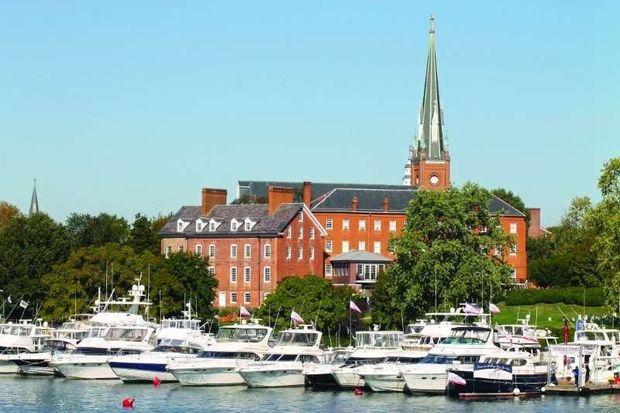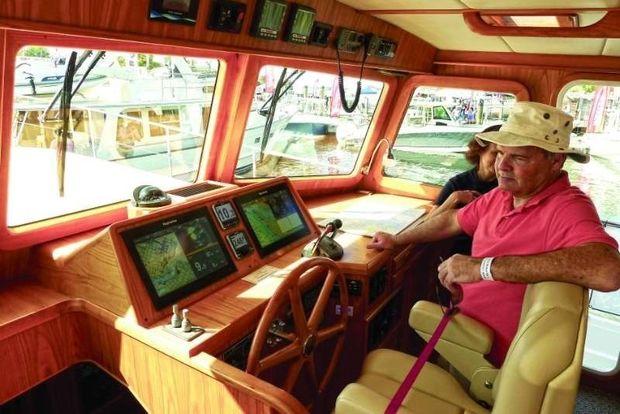The challenges of buying a boat involve careful consideration of a set of important variables, making the necessary trade-offs, and acting on facts not emotion. These hold for both the first time buyer and an experienced boater moving up (or down). The purpose of this three-part series of articles is to share some ideas and provide some advice but with no specific recommendations or endorsements. The series focuses on used boats only and is broken down into three parts: doing your homework, money and your team, and the search and doing the deal.

Doing your homework equals better results.
Ever heard someone ask “what’s the best boat?” The simple answer is that there isn’t one. The question is better put as such: “What is the best boat for you for the purpose intended?” Basically this is a self-examination backed up by facts. If you are considering your first boat, start by defining where you intend to use the boat. Lakes restrict cruising but offer fresh water which is sometimes cold. The Bay provides access to the world and ranges from salt to fresh. Salinity affects maintenance costs. Your boat’s proximity to your home may define how often you will use your boat.
A discussion of where you will boat leads to usage. For the powerboater, usage ranges from cruising to a weekend waterfront cottage, to fishing, to water sports such as wake boarding or skiing and Personal Water Craft (PWC). Usage also defines the configuration. Liveaboards and long-range cruisers put the greatest pressure on functionality because their boat is their home.
Defining the best boat for you boat is more challenging. If you don’t have any experience, take lessons. The Coast Guard Auxilliary and Power Squadron offer a number of courses. As a novice, getting on the water is imperative. Rent a day boat or charter for a weekend to get the feel of various boats. Presuming you have some boating experience, keep notes and begin building lists of your likes and dislikes of various boats. Couples should make individual lists. There will be differences. Merge the lists. Prioritize the merged list to identify which items are most and least important. For example, radar is nice, but perhaps a power windlass is of a higher priority for a couple who plan to cruise following retirement. For singles, this is an easier process as you need only please yourself. And this is not the final list; it will undergo continual refinement and rethinking.
Cruising the Bay or even the Intracoastal Waterway to warmer climates translates into a larger boat and involves more “creature comforts.” Perhaps the boat will be just a smaller version of one’s home with a television, a microwave, and air conditioning. Who will be on board will affect boat choice, gear, and cost. Will the boat be a family affair with occasional guests or mostly just “us two”? Pets will change the parameters. If your focus is on fishing, speed and endurance are most important. The smaller runabout represents versatility. Trailerable or high and dry usage further expands the possibilities.
Usage will define hull type, engine choices, configuration, and gear. The two basic hull forms are displacement and planing. Displacements move through the water while planing hulls are designed to ride on the water. Displacement hulls are heavier, could be more comfortable, but are slower. Planing hulls can pound and can fatigue the crew, but are faster. Displacement hulls like trawlers are normally powered by diesel; planing hulls are gas, inboard, inboard-outboard (IO), or outboard. Each is “propelled” (they employ propellers). The PWC and some high-end cruisers are propelled by “water jets” that pull water through a turbine; the force of water drives the boat ahead and astern. Fuel usage varies with hull form. Power boats are primarily mono-hulls with only a few “catamaran” hulls in use. Pontoon boats are most popular on lakes and calmer waters.

Considering the layout
Your efforts don’t stop with location, usage, hull form, and propulsion. You will need to consider cockpit, deck, and cabin arrangements, accommodations below, access and stowage, and equipment. Check out deck layout for visibility, ease of movement, and functionality. The cockpit is where one spends the most time, so it had best be well configured. Can you lie down comfortably in the cockpit? Is it large enough to accommodate the number of people you plan to boat with? For larger cruisers, is there room for comfortable deck chairs? Below deck, watch out for that 25 footer that sleeps six? Comfort and safe movement are more important. Ask yourself: can you fit, get into, is there enough room for… etc. Finally, equipment can range from basic to overly complicated; new, tired, obsolete, or broken. The sum of all these parts defines how the boat will perform, affect the price, its safety… and lots more. This is particularly evident in layout, both topside and below. Tradeoffs will be challenging and could be interesting.
Standards and resources
Armed with your lists, selecting a type of boat will go much easier by referring to some standard measures. The most important consideration is the engine. Is it properly sized for the weight of the boat? Is fuel consumption efficient or will it suck the tank dry? Make sure the engine will be powerful enough to punch through a nasty sea and headwind. Some boats are underpowered which is dangerous. Seating and berthing ergonomics are extremely helpful. Careful study and research will assist in prioritizing and making trade-offs.
While you’re at it, don’t forget the many other sources of available information to assist you as you proceed with your search. Look online at sites like Proptalk, Yacht World, InterYacht, and Soundings, as well as individual sites on production boats and equipment. West Marine has equipment reviews and other information easily available. Read books, magazine articles, and boat reviews such as those in Practical Boater to compare. Don’t forget to attend boat shows and just “walk the docks.” Most important, get out on the water in as many different boats as possible. If available, charter boats may be on your short list.
by David "Merf" Moerschel
Click here to read Part II in this three part series: Money and Building Your Team.